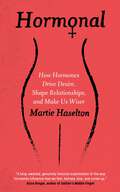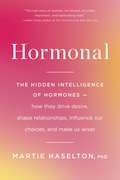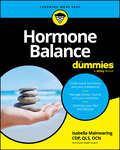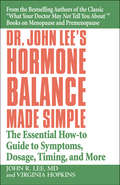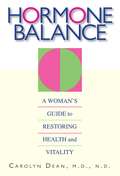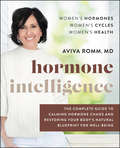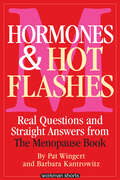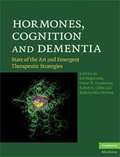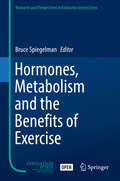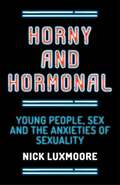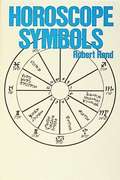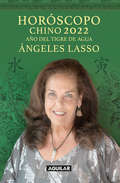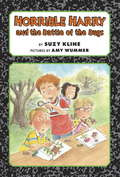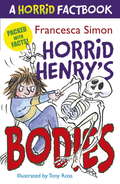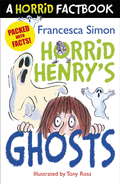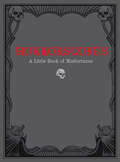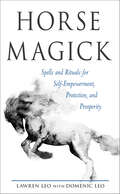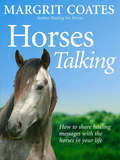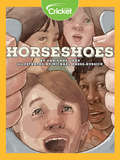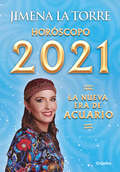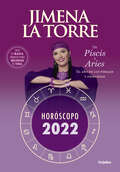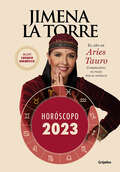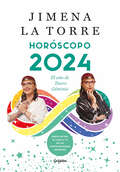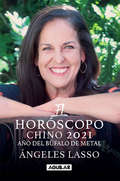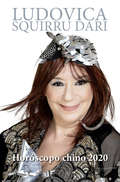- Table View
- List View
Hormonal: How Hormones Drive Desire, Shape Relationships, and Make Us Wiser
by Martie HaseltonProvocative, ground-breaking and entertaining, the world&’s leading expert on sexuality and the ovulation cycle reveals the hidden intelligence of hormones.In this paradigm-shifting book, Martie Haselton explains how hormonal intelligence works - both its strengths and its weaknesses - and shows women how to track and understand their desires, fears and perceptions with a radical new understanding of the biological processes that profoundly influence our behaviour. Rigorously researched, entertaining and empowering, Hormonal offers women deep new insights into their bodies, brains and relationships, and will encourage women everywhere to embrace the genius of female biology.
Hormonal: The Hidden Intelligence of Hormones -- How They Drive Desire, Shape Relationships, Influence Our Choices, and Make Us Wiser
by Martie HaseltonThe hidden intelligence of hormones and their role in empowering women to succeed sexually, reproductively, and socially.Did you know women walk more, eat less, socialize more, meet more men, dance more, and flirt more when they're ovulating? Or that PMS may have evolved to get rid of boyfriends with unfit sperm? Behind the "fickle" differences in what women find sexy about men, or what they like to wear, there's a hidden adaptive intelligence that has been shaped over eons. In this provocative and paradigm-shattering book, Martie Haselton, the world's leading researcher on sexuality and the ovulation cycle, takes a deep, revealing look at the biological processes that so profoundly influence our behavior and sets forth a radical new understanding of women's bodies, minds, and sexual relationships, one that embraces hormonal cycles as adaptive solutions to genuine biological challenges. At the core of Hasleton's new Darwinian feminism is her remarkable discovery that humans, like our animal cousins, possess a special phase of sexuality, called estrus, which comes with a host of physiological and behavioral changes.Rigorously researched, entertaining, and empowering, Hormonal offers women deep new insights into their bodies, brains, relationships, and affairs, allowing them to make better-informed choices about sex, marriage, friendship, contraception, and more. Above all, Hormonal is a clarion call to appreciate and embrace the genius of female biology.
Hormone Balance For Dummies
by Isabella MainwaringAchieve balance and improve your health, mood, vitality and energy from within Hormones are your body's chemical “messengers,” the regulators of essential functions like metabolism, reproduction, mood, and growth. But, in our 24/7, hyper-connected modern world, many of us increasingly find ourselves in situations of chronic stress that can imbalance or disrupt our bodies' natural hormonal balance. In Hormone Balance For Dummies, renowned hormone health coach Isabella Mainwaring delivers an accessible and exciting new take on hormonal imbalance. You'll discover why hormone balance is so important for you and contributes to everything from the maintenance of a healthy weight to fertility, mental wellness, and overall health. The author goes beyond diet and lifestyle to offer practical nervous system regulation tips and dive deep on available treatment options for hormonal imbalance. In the book: Find out why stress, poor gut health, medications, toxins and unprocessed emotions and trauma can negatively impact your hormonal balance Be proactive in managing your hormone health to ensure robust health and wellbeing throughout life Explore traditional and alternative therapies for hormonal imbalances, including somatic work and EMDR Perfect for men and women of reproductive age, and anyone else interested in their own health and wellness, Hormone Balance For Dummies is a must-read roadmap to improved wellbeing, mood, energy, and a brand-new lust for life!
Hormone Balance Made Simple: The Essential How-to Guide to Symptoms, Dosage, Timing, and More
by John LeeFor nearly a decade, millions of women have turned to Dr. John Lees classic bestsellers for groundbreaking advice treating hormone imbalances from PMS to menopause and beyond. Now, this concise, comprehensive guide answers the questions posed by thousands of letters written to Dr. Lee by women seeking specific, simplified advice on what their symptoms mean, how to determine their hormone levels and how to maintain hormone balance. Short on medical jargon and long on solutions, this accessible guide features: a hormone balance test, lists of symptoms and causes, easy timing and dosage guidelines, a monthly calendar for tracking symptoms, and much more.
Hormone Balance: A Woman's Guide to Restoring Health and Vitality
by Carolyn DeanMood swings. Weight gain. Fatigue. And that&’s just on your good days. Your hormones are out of whack—and you don&’t know what to do next. With Hormone Balance as your guide, you&’ll call on both traditional and alternative solutions to get you off that hormonal rollercoaster for good. No matter what your age or your issues, medical authority and naturopath Dr. Carolyn Dean has a plan for you—one that will help you balance your hormones and achieve greater overall health. Written in her engaging, easy-to-understand style, Hormone Balance is chock-full of information on all aspects of a woman&’s body: The truth behind PMS; Remedies for monthly challenges such as bloating and cramping; Causes and patterns of perimenopause; Pros and cons of HRT and natural hormones; Protection against osteoporosis; How exercise can make—or break—your hormonal cycle; Tips for a healthy hormonal diet—how to get the right foods and supplements; and more. With solid yet simple information, helpful facts, and prevention plans, Hormone Balance is all you need to feel like yourself again—in mind, body, and spirit!
Hormone Intelligence: The Complete Guide to Calming Hormone Chaos and Restoring Your Body's Natural Blueprint for Well-Being
by Aviva Romm M.D.You are not broken. Being a woman is not a diagnosis. Take your body back with the groundbreaking new science for women in Hormone Intelligence.Hormonal. We all know what it means when we hear it – and feel it. While hormonal shifts are natural throughout women’s lives, too many experience distressing period symptoms, struggle daily with PCOS, endometriosis, a fertility challenge, pain, low sex drive, sleep problems, acne, bloating, hot flashes, and more – all due to hormone-related problems. And too many are unable to get the answers they’re really seeking from their doctors.There is a solution. In Hormone Intelligence, Yale trained and internationally renowned women’s health expert, Dr. Aviva Romm, helps you identify the root causes of your symptoms and guides you through a 6-week proven program to achieve lifelong hormonal and gynecologic health. Using a holistic, dietary and lifestyle changing approach, Hormone Intelligence goes beyond treating symptoms to the deeper factors impacting women’s health, so you can reclaim your body, hormones, and self.Inside Hormone Intelligence, you’ll find:· Hormone Health 101: Understand the key components of the hormone epidemic and associated dietary and lifestyle triggers.· Symptoms and Root Causes Demystified: Discover what your symptoms are saying about your hormones with quizzes, checklists, trackers, and more.· A 6-Week Action Plan: Learn what foods you should indulge and avoid, how to repair your microbiome to support hormone health, how to identify environmental hormone disruptors, engage your body’s natural detoxification systems and reduce hidden inflammation, and the lifestyle changes that lead to happy, healthy hormones.· Delicious, done-for-you meal plans to take you through the entire program, including vegan options.Hormone Intelligence is an invitation to a whole new relationship with your body and hormones, the exhale you’ve been waiting for, and the first step on the road to realizing that a diagnosis does not have to be your destiny.Extended references, a complete index, and additional resources for Hormone Intelligence can be found at the author's website.
Hormones and Hot Flashes: Real Questions and Straight Answers from The Menopause Book
by Barbara Kantrowitz Pat WingertAdapted from The Menopause Book—dubbed “Dr. Spock for aging women” by the North American Menopause Society—HORMONES & HOT FLASHES answers the most-pressing questions women have about hormones, hormone therapy, and the often-unpleasant symptoms of menopause. <P><P>Grounded in sound science and the latest medical research and vetted by the top experts in the field, the book debunks the many myths and unproven (often dangerous) “treatments” marketed toward women; objectively weighs the risks and benefits of hormone therapy; and discusses how to minimize hot flashes through diet, exercise, and other lifestyle changes. <P>All about estrogen, progesterone, and the roles they play in your body; Is hormone therapy right for you? Age, health, symptoms, and other factors to consider; Hormone supplements versus birth control pills (and yes, today’s low-dose pills are safe for older women); Treatment options for cancer survivors; Hormone therapy and heart disease; Plus, the link between hot flashes and future health, a Hot Flash Emergency Kit, the lowdown on alternative medicine, controlling night sweats, and lots more. <P>All your questions, answered. Workman Shorts is a line of bite-size, subject-specific e-books curated from our library of trusted books and authors. To learn more about Workman Publishing, please visit our website at www.workman.com.
Hormones, Cognition and Dementia: State of the Art and Emergent Therapeutic Strategies
by Eef Hogervorst Victor W. Henderson Robert B. Gibbs Roberta Diaz BrintonA decade ago, estrogen-containing hormone therapy was viewed as a promising strategy for the prevention and treatment of dementia and age-related cognitive decline. However, treatment trials in women with Alzheimer's disease showed that estrogens did not reverse cognitive impairment, and clinical trials in healthy older women indicated that estrogens did not prevent cognitive decline. The Women's Health Initiative Memory Study trial even suggested an increased risk of dementia with treatment late in life. What happened? How are we to understand these findings? What are the implications for middle-aged and older women? What about testosterone, and what about men? And where do we go from here? This book brings together world-renowned experts in basic and clinical research on sex steroids, aging, and cognition to integrate existing findings with emerging new data, and offer challenging hypotheses on these key issues.
Hormones, Metabolism and the Benefits of Exercise (Research And Perspectives In Endocrine Interactions Ser.)
by Bruce SpiegelmanThe world is faced with an epidemic of metabolic diseases such as obesity and type 2 diabetes. This is due to changes in dietary habits and the decrease in physical activity. Exercise is usually part of the prescription, the first line of defense, to prevent or treat metabolic disorders. However, we are still learning how and why exercise provides metabolic benefits in human health. This open access volume focuses on the cellular and molecular pathways that link exercise, muscle biology, hormones and metabolism. This will include novel “myokines” that might act as new therapeutic agents in the future.
Horny and Hormonal: Young People, Sex and the Anxieties of Sexuality
by Nick LuxmooreEllis's mother is angry because he's been watching porn. Sheron says she hates her body. Mitchell's upset because Jack doesn't want to have sex with him... Sex affects everything. It may not be the single most important thing in a young person's life, but it's always important and a crucial means by which young people try to understand themselves, whether they're in sexual relationships, on the brink of sexual relationships or watching from afar. Yet sex and sexuality are subjects that many adults (including parents, counsellors, teachers and other professionals) are wary of talking about with young people. This book is about helping young people feel less anxious about sex and sexuality. It's also about helping professionals feel more confident. Weaving case material with theory and discussion, Nick Luxmoore describes vividly the dilemmas faced by so many young people and suggests ways of supporting them effectively at such a crucial and sensitive time in their lives.
Horoscope Symbols
by Robert T. HandyEvery age must re-examine astrological tradition in the light of its own experience. In Horoscope Symbols, Robert Hand, one of the foremost astrologers of his generation, recreates astrology for our time. In this book, Hand takes the reader deep into the heart of each of the planets (and other Every age must re-examine astrological tradition in the light of its own experience. In Horoscope Symbols, Robert Hand, one of the foremost astrologers of his generation, recreates astrology for our time. In this book, Hand takes the reader deep into the heart of each of the planets (and other points), angular relationships (aspects and midpoints), zodiacal positions (signs), and mundane positions (angles and houses). Whether you're a beginning student or a practicing professional, Horoscope Symbols takes you beyond your present conception of astrology into a whole new realm of understanding. Horoscope Symbols takes the beginner beyond cookbook interpretations to genuine insight, beyond superficial keywords to the fundamental principles that underlie astrology, beyond overemphasis on signs to the primacy of planets and angles. Although Hand assumes little prior knowledge of astrology, the more you know, the more you will get out of this book. Hand takes the expert beyond the fatalism of tradition to a deep understanding of the role of personal choice in the life of the individual, beyond fortune-telling to the true source of human experience. In writing Horoscope Symbols, Hand draws not only on his years of experience as an astrologer counselor, writer and teacher, but on his vast erudition in science, history, philosophy and psychology. Horoscope Symbols is humanistic astrology at its best.
Horoscopo chino 2022
by Ángeles LassoLa más popular de las astrólogas chilenas nos entrega sus predicciones para 2022. Tras dos años de pandemia, podemos decir que nos encontramos inmersos en una burbuja del tiempo en la que nuestras vidas se han visto detenidas. Como si un misterioso acto de magia hubiese cambiado por completo la realidad a la que estábamos habituados. ¿Qué desafíos nos traerá el Tigre de Agua? Mantenernos serenos con el cuerpo y el alma en sintonía. Ser conscientes del lugar y en el estado en que nos encontramos, sabiendo quiénes somos y de quién o de qué dependemos. Puede que sea la clave de una feliz sobrevivencia. Cuando se aproxima el gran felino, todos guardan silencio. El Tigre acecha desde el futuro inmediato, sus ojos dorados atraviesan el tiempo por venir, el murmullo de sus pasos cada vez más próximos anuncia el cambio que se avecina. Es hora de liberarnos del miedo, recuperar la libertad, el valor y la osadía. Prepararse para el tiempo nuevo, las batallas continuarán, pero serán otras.
Horrible Harry and the Battle of the Bugs
by Suzy KlineHarry loves creepy-crawly things. But there’s one creepy-crawly thing that even he can’t stand: head lice! So it’s a terrible day when Harry’s friend Doug discovers lice in his hair. To make matters worse, Mary makes fun of Doug for being dirty and convinces the rest of the kids in Room 3B that they can’t go near him. She claims that everything he touches is infested with lice—even the mac and cheese at lunchtime! Doug wants to run away to Siberia instead of facing his classmates South School. But Harry and Song Lee stand by him and declare battle on the bugs. Will Harry defeat the hated lice, or will Doug have to live with these horrible bugs forever?
Horrid Henry's Bodies: A Horrid Factbook (Horrid Henry #1)
by Francesca SimonDid you know that if your intestines were removed they would stretch round a tennis court several times over? Or that humans are as hairy as gorillas? Or that you move more than 90 muscles in your leg every time you take step? Or that you'll spend three years of your life on the toilet and one third of your life asleep?Packed with freaky facts and random trivia, this is the perfect guide to everything you ever wanted to know (and lots of things you might never have wanted to know) about Bodies - Horrid Henry style!
Horrid Henry's Ghosts: A Horrid Factbook (Horrid Henry #1)
by Francesca SimonFrom multi-million-copy selling author, Francesca Simon, and David Walliams' illustrator, Tony Ross, comes the latest title in the successful Horrid Henry's Factbooks series. What's the most haunted house in the world? What's the scariest ghost story ever told? And what's hiding under your bed right now?Bursting with scary facts and horrible trivia, this is the perfect guide to everything a Horrid Henry fan has ever wanted to know about ghosts. Terrify your family and amaze your friends with your nasty new knowledge!
Horrorscopes: A Little Book of Misfortunes
by Lucien EdwardsDiscover what dark fate awaits you based on your birthday in this spooky take on horoscopes, featuring dark days, unlucky numbers, and evil omens. This book is full of eerie predictions and ominous fortunes that add a sinister twist to the typical horoscope. Those who enjoy the dark side can look up their birthday to discover the terrible fate that awaits them—from attack by hungry zombies to transformation into an ogre. With useful information including dark days, unlucky numbers, and evil omens, this chilling guide is sure to have readers looking under their beds and over their shoulders all year long.
Horse Magick: Spells and Rituals for Self-Empowerment, Protection, and Prosperity
by Lawren LeoDiscover inner strength and wisdom by bringing the power of the equine spirit to life with spells, meditations, and creative visualization.Along with the bear, horses are a primary creature associated with shamanism and traditions influenced by it. They appear in 25,000-year-old cave paintings, such as those at Lascaux. They find a role in the modern African diaspora traditions such as Haitian Vodou, whose devotees are called "horses" for the spirits who ride them during trances.The spirit of the horse exists in the subconscious minds of humans and takes shape in various forms, whether as a symbol of fertility in the land, as in Celtic mythology, or as a psychopomp, which leads the dead to the next world. The horse has made its way into the current of our collective unconscious as a universal archetype.Horse Magick contains spells, rituals, chants, and meditations for many purposes, loosely based around equine imagery. Numerous traditions are represented, as are many deities, including Athena, Epona, and Baba Yaga. No contact with actual horses is required.Through the use of spells and rituals, readers are able to magickally ride to their chosen destinies and fulfill their desires. Workings involve crystals, candles, and Tarot cards, items easily accessible for most readers.
Horses Talking: How to share healing messages with the horses in your life
by Margrit CoatesFollowing the success of 'Healing for Horses', in this book, Margrit Coates explains how readers can learn to interact with equines on a deep level. She gives practical advice on how to tune into your horse and understand what he or she is trying to communicate to you about wellbeing. You will discover how to sense what your horse is feeling and when it is healthy or suffering. You will also learn how to exchange healing messages, soul to soul, with your horse in order to improve their health and yours, and to strengthen the bond between you. Included are many fascinating case histories of horses and those who care for them, showing how they have mutually benefited by learning to open channels of communication. Intended for every horse owner, rider and handler - and the many thousands of people around the world who work with horses including vets, complementary therapists, grooms, stable hands, trainers, instructors and breeders. This book is for anyone who loves horses.
Horseshoes
by Darienne OaksA young girl feels like she doesn't fit in because her father is disabled. But when her dad puts on his strongman act for the neighborhood kids, she realizes how special he truly is.
Horóscopo 2021: La nueva era de Acuario
by Jimena La TorreJimena La Torre analiza cuáles serán los planetas más importantes en 2021. El horóscopo para cada signo mes a mes. Este año brinda un detalle sobre las energías planetarias y consejos para hacer cada día del año. Hay un capítulo dedicado a las fases lunares. También dos capítulos especiales: uno que escribió junto a su hijo, en donde nos cuentan cómo debe ser coacheado cada signo; otro con una Carta Natal de la Argentina para saber cómo estará la Nación. En Horóscopo 2021, la nueva era de Acuario, Jimena La Torre nos cuenta cuáles serán los planetas más importantes en 2021: los lentos, los enanos, el nodo y las asteroides. Luego analiza los signos beneficiados con las entradas planetarias, además del horóscopo de los doce signos mes a mes. El año de Acuario renueva la energía colaborativa. Vas a encontrar un apartado sobre cómo vincularte con los diferentes compañeros del zodíaco. Al final de cada signo te presentamos la carta de la suerte indicada para este año. Horóscopo 2021 brinda un detalle diario sobre cuáles son los tiempos favorables para el amor y el dinero, así como también consejos para poner en práctica diariamente. El libro incluye un capítulo dedicado a las Lunas, con ilustraciones para cada fase lunar, y un capítulo especial que Jimena escribió junto a su hijo Javier, donde nos cuentan cómo debe ser coacheado cada signo para trascender. También encontrarás un anexo con la carta natal de la Argentina según la fecha de la Asamblea del año XIII para saber cómo estará la Nación en este nuevo año de Acuario.
Horóscopo 2022: De Piscis a Aries. El año de los finales y principios
by Jimena La TorreJimena La Torre, astróloga especialista en tarot y artes esotéricas con más de veinte años de experiencia, nos ofrece su clásico anuario, como desde hace más de una década. Este libro incluye pronósticos mes a mes para cada signo y todo lo que necesitamos saber para descubrir lo que nos espera en el 2022. «Llega 2022 y se abre una esperanza. La perspectiva de algo nuevo. Aprovechemos la posibilidad que nos da el tránsito de Júpiter, rey de los planetas, que va de Piscis a Aries y de Aries a Piscis. Es hora de creer en la energía que tenemos en nuestro interior; en el conocimiento para usarla. Es hora de convertirnos en los artífices de cada momento que nos toque vivir. ¿Qué se propone este libro? Ayudarte a construir tu propia magia, a conducirla por el camino que vos elijas, a diseñar un recorrido propio, personal.» Basándose en los movimientos planetarios, en Horóscopo 2022 Jimena La Torre ofrece predicciones y consejos destinados a guiarte en todos los espacios importantes de tu vida: en tus lazos familiares, en la salud, en las finanzas y en el amor. Con su experiencia y su sensibilidad únicas, y la convicción de quien sabe que la astrología puede generar una revolución, Jimena te lleva de la mano por cada uno de los signos del zodíaco, identificando mes a mes tanto oportunidades como potenciales problemas, y como siempre, proponiéndote herramientas para aprovechar la buena suerte cuando se presenta, para resolver conflictos, para alcanzar el éxito profesional. Toda la información que necesitás para encarar el 2022 con un espíritu positivo, está acá. En estas páginas: una lectura apasionante e inspiradora. Una inyección de energía que va a transformar tu vida.
Horóscopo 2023: El año de Aries-Tauro. Comenzando el viaje por el zodíaco
by Jimena La TorreEn este libro, Jimena La Torre comparte predicciones mes a mes para cada signo y todo lo que necesitás saber para descubrir lo que te espera en el próximo año. Y para los amantes de los movimientos lunares, te brinda una guía fundamental para el amor, la vida y el éxito en 2023. El único horóscopo que necesitás. «Bienvenido a 2023, el año en el que sabrás ser y tener la vida que merecés. Los planetas te apoyan y activan lo mejor para cada situación.Un año en el que verás que tu transformación llegó, que no sos el mismo de hace pocos años, que tu fe te movió hasta acá, que sos tu propia guía espiritual . En este libro te doy todos los tránsitos astrológicos y las herramientas mágicas del esoterismo para que el universo acompañe en este gran desafío.» En este Horóscopo 2023 Jimena La Torre, la astróloga número uno de la Argentina, te cuenta mes por mes lo que va a suceder con todos los movimientos planetarios, así sabrás qué camino tomar. También encontrarás un "Lunario" para los amantes de este satélite que influye a diario en nuestra vida. Además, tiene sortilegios mágicos, predicciones acordes a los tiempos por vivir, plus y bonus extras para tener en cuenta. Incluye un capítulo especial para cada signo donde podés leer todo lo que te interesa saber: romance y amor, trabajo y vocación, reconocimiento y éxito, y un párrafo mágico para optimizar tu vitalidad. Recordá que el universo te ubica donde tenés que estar, y si este libro está en tus manos es porque es para VOS.
Horóscopo 2024: El año de Tauro - Géminis
by Jimena La TorreDiario astral el lado A y B de las compatibilidades amorosas. Jimena La Torre, la astróloga más renombrada de la Argentina, te ofrece en su Horóscopo 2024 un mapa mágico para ir recorriendo las novedades y oportunidades que aparecerán a lo largo del próximo año. Este 2024, con un mundo cada vez más complejo, nos anima a utilizar nuestra productividad para enfrentar los desafíos que se nos presentan, sin perder de vista la importancia de cuidar la inocencia y mantener vivo al niño capaz de amar y perdonar. La combinación Tauro - Géminis de este año nos ofrece una guía para recorrer los misterios de la vida y usaremos los tránsitos planetarios como brújula para ir descubriéndolos. A través de la integración de ambas caras de la misma moneda encontraremos en nuestra propia existencia la plenitud y la sabiduría. ¿Querés arrancar tu 2024 con todo? ¿Identificar y anticipar los desafíos que te sorprenderán en el transcurso del año? ¿Enfocarte en lo que de verdad importa? ¿Reconocer y desplegar todo tu potencial? En su Horóscopo 2024 Jimena La Torre, la astróloga más renombrada de la Argentina, te brinda un mapa perfecto para ir descubriendo las novedades y oportunidades que aparecerán a lo largo del próximo año. Una vez más, compartirá con vos las fechas más auspiciosas para la vida, el trabajo y el amor. Animate a conocer tanto el lado A como el lado B de las compatibilidades, explorando signo por signo las cualidades y debilidades de cada uno. Jimena La Torre te ofrece una guía mágica para que puedas conocerte.
Horóscopo Chino 2021: Año del búfalo de metal
by Ángeles LassoLas predicciones de la más destacada astróloga chilena para el mundo en el año que viene y para cada uno de los signos. Ángeles Lasso se ha convertido en la astróloga más popular y de mayor venta en Chile gracias a sus libros sobre el horóscopo chino, que viene publicando regularmente cada año. A diferencias de otros del mismo tipo, este ofrece no solo entrega las claves que trae el año venidero para cada signo, sino que también hace un extenso análisis a la situación del mundo en general, dando sorprendentes revelaciones de lo que ocurrirá en diversos ámbitos en Chile y en el resto de los países. Cambios, hitos políticos, movimientos sociales, fenómenos de la naturaleza y lo que ocurrirá en términos sanitarios con el Covid-19 y sus efectos en la humanidad, son parte de los contenidos de este libro. Dice la autora: “Tras los acontecimientos extremos que sacudieron al planeta durante el anterior año regido por el Ratón de Metal, no tenemos duda que hemos dado vuelta a la esquina del tiempo, iniciando un camino sin retorno hacia un nuevo ciclo de la historia de la humanidad. El 2021 estará liderado por el poderoso Búfalo Metálico, que será el encargado de diseñar los nuevos códigos de conducta en un mundo invadido por peligros invisibles, pero tambieìn mortales (…) Evolucionar, crecer, despertar como humanidad, usar sin abusar de los recursos naturales, aprender de los pueblos ancestrales, derribando las fronteras de la ignorancia que nos trajo a este punto sin retorno, esa será la tarea que debamos cumplir durante el presente período astral”.
Horóscopo chino 2020
by Ludovica Squirru DariEl nuevo libro de predicciones de la astróloga best seller Ludovica Squirru Dari, para 2020, año de la Rata de Metal. El horóscopo chino es un texto oracular predictivo basado en disciplinas taoístas combinadas con el pensamiento filosófico, moral y religioso del budismo y el confucianismo. Las doce figuras de los animales son metáforas del comportamiento humano y de las energías que los envuelven. Es una herramienta tan precisa que con ella es posible predecir el futuro amoroso, económico, familiar y de la salud. Ludovica Squirru Dari, la astróloga más leída y best seller internacional, nos guía en este nuevo Horóscopo chino para que en 2020 sepamos cuál es nuestro lugar en el universo y podamos tomar buenas decisiones, mejorar nuestra calidad de vida y relacionarnos con inteligencia y amor con el resto del zoo. Y, a través de su astrología poética, Ludovica nos invita a reconocer nuestros lados oscuros y luminosos. Este libro incluye además el pronóstico para cada país y los destinos ideales para las vacaciones de cada animal. «Comienza la rueda del zodíaco chino. Esta vez la Rata marcará la ruta a seguir para aceptar que lo que fue ya no es ni será, y que dependerá de nuestra aceptación al vertiginoso cambio cósmico, climático, geopolítico y humano la forma en que nos insertemos en este ciclo. La Rata de Metal viene con velocidad de tren bala japonés. Debemos prepararnos como samuráis.»L.S.D.
